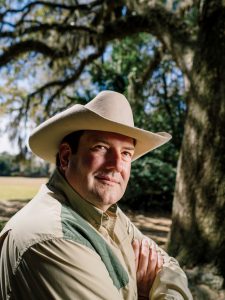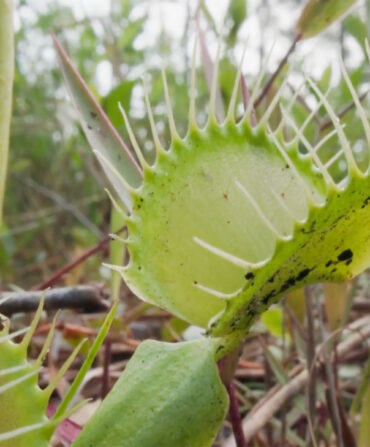Sporting
The Plantation Broker
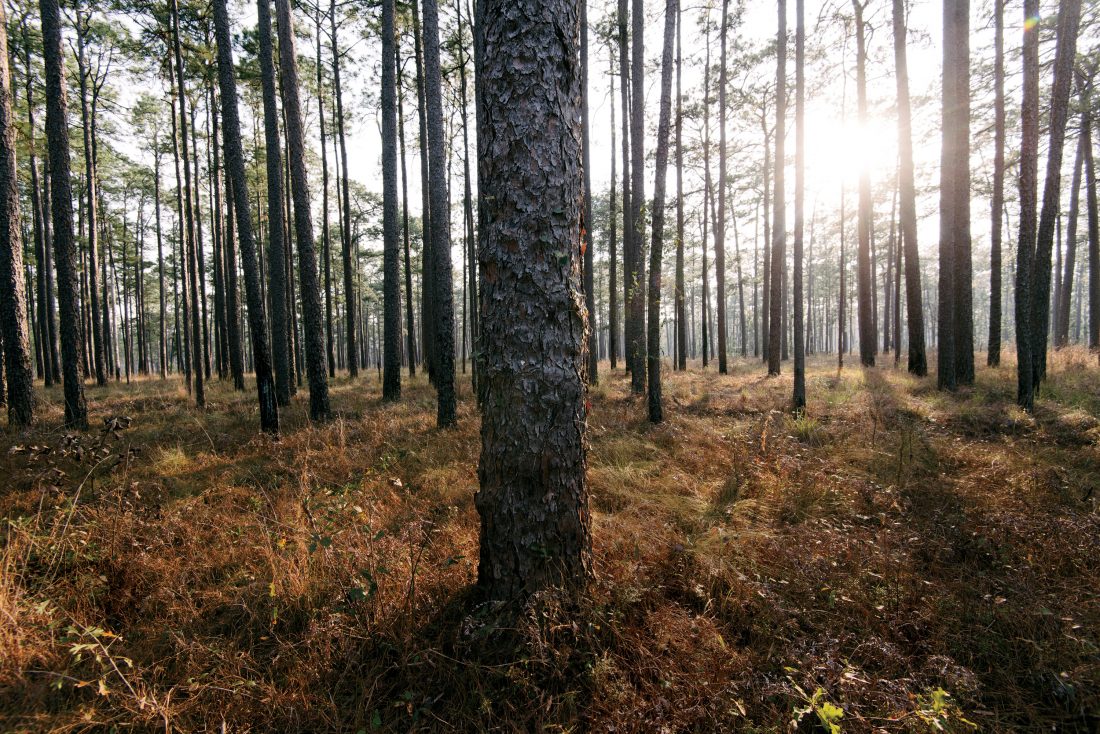
Photo: Andrew Kornylak
Truth is, we’d given up on the bird dogs. We came off the horses when the dogs first pointed, pulled the shotguns from the scabbards and marched in for the shot, but the quail broke and ran, followed by the pointers, who trailed the covey up a long North Florida slope of scattered pine. Three times the dogs pointed, and three times the covey bolted uphill. That’s when our hunt master, Shane Stuckey, called the dogs in, and Jon Kohler and I unloaded our guns.
But as we turned back toward the horses, Shane stood shaking his head. The dogs were on point once again, forty feet from a lone live oak shading the crest of the hill.
“Get ready,” said Stuckey. “The birds’ll be pinned down at that big oak. Y’all walk ’em on up.”
This time the quail covey burst from the tangled turkey oaks and grass, a roaring cluster of wings and beaks that atomized in every direction. I missed once, connected on the second trigger pull, and glanced over toward Kohler. Feathers drifted around him like a Florida snowstorm. “Double?” I called over, and he answered with a grin.
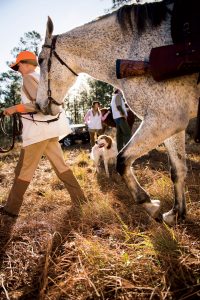
Photo: Andrew Kornylak
Jenni Cahoon leads Smoke while hunting on Valhalla Plantation
As I looked back to that live oak on the hill, I began to understand what had come together over the last few minutes. That old oak wasn’t there by accident. Arthur and Jenni Cahoon, who own this Valhalla Plantation, made a conscious decision to keep big oaks in the quail woods, a position not all of their neighbors share. Those old hardwoods harbor quail-eating raccoons and snakes. They make a fine perch for hawks. Many quail plantation owners have little love for them. But few elements at the 2,400-acre Valhalla are here by chance. The Cahoons deserve much credit for creating a place where bobwhites still thrive—over the course of a three-hour hunt, we put up eight coveys of wild quail.
Kohler broke open his shotgun to clear the barrels. He’s a big man, six foot four, with a white cowboy hat that has become something of a trademark. He stood near the crest of the hill as an English cocker raced through the underbrush, searching for the felled birds, the final piece to our sporting tableau. In no small fashion, too, Kohler plays a significant role in the Red Hills’ reputation as the nation’s preeminent quail-hunting region. It’s a place seeded with incongruity, after all: where fire gives life, where some of the savviest business minds in the country seek to turn time backward, and where one of the region’s great champions of conservation is a real estate broker.
From Tallahassee, Florida, to the Ochlockonee River north of Thomasville, Georgia, three hundred thousand acres of rolling open pinewoods, carpets of golden wiregrass, ancient lakes, and river swamp compose a landscape lifted from the nineteenth century. This is the Red Hills, where more than a hundred quail-hunting plantations, most with roots in the Gilded Age, maintain an ecosystem and a sporting culture that have passed from other parts of the South. It’s a national-park-size expanse of land, much of it in semiwild condition, scored by sandy roads and farm paths that lead to massive plantation homes. Some have been built in the last few decades, but most were constructed by wealthy Northern industrialists who flocked to the region as land prices collapsed after the Civil War. Enamored of the aristocratic trappings of European-style bird hunting, Red Hills plantation owners imported English setters and pointers, English horses, and British bespoke shotguns.
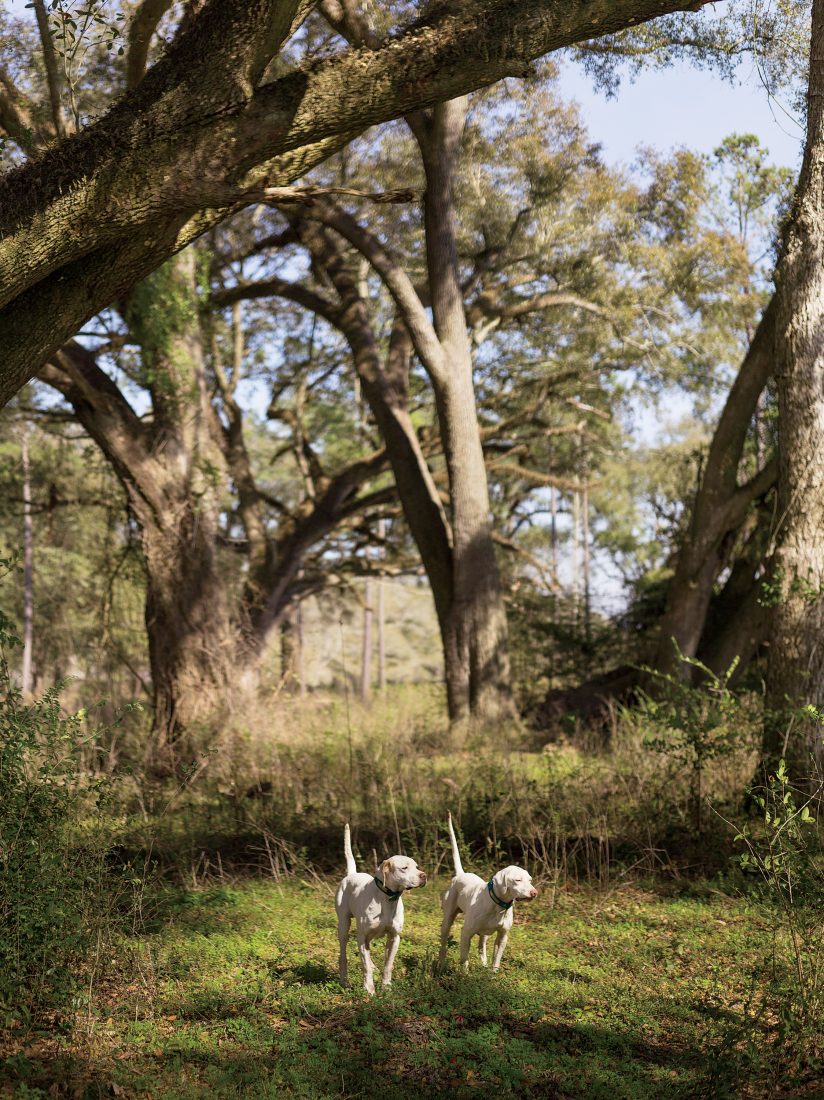
Photo: Andrew Kornylak
Perfect Setting
Two English pointers at work in the Red Hills
Over time, and by happenstance, a sprawling, ecologically rich landscape was created that today is among the most natural and native ecosystems remaining in the South. Owned by some of the wealthiest Americans, the Red Hills plantations are famed for perhaps the densest population of wild bobwhite quail remaining on the planet. It’s not uncommon for a hunting party to find fifteen or twenty wild coveys in a day, a figure practically unheard-of elsewhere.
The quail are here in high numbers because landowners spend small fortunes managing the pine forests of huge plantations. They employ biologists and foresters to burn the woods as frequently as every other year, and remove invasive hardwood shrubs that push out the bobwhites, and restore longleaf pine and wiregrass savannas, and tailor timber harvest to the needs of quail. More than a few are willing to go to such lengths because Jon Kohler convinced them that it’s the right thing to do.
Behind the wheel of a white Ford F150, Kohler can eyeball a piece of woods at sixty miles per hour and tell you, with a high level of confidence, if a tract of pinewoods carries sixty square feet of timber per acre or forty. He can tell which landowners are taking care of their grass. Who is squeezing their woods for a bit more profit than a year before. On our first drive through the Red Hills, with smoke from a prescribed burn drifting in the woods by the highway, Kohler was so focused on the lands lying to each side of the highway that I double-checked my seat belt.
“That’s Ted Turner’s place, Avalon, about thirty thousand contiguous acres.”
“This is about where de Soto came through the capital of the Apalachee nation.”
“That’s Oak Hill, owned by a former Speaker of the Florida House and former president of Florida State University.”
It’s a running commentary he can keep up for miles. That plantation is owned by a family member of a Winn-Dixie founder. Over there, Heritage Plantation, owned by the former CEO of Coca-Cola. Up the road, a plantation that hasn’t left the family in five generations. Over there, the plantation recently owned by Henry Ford’s only granddaughter.
Many of these are properties Kohler has sold, parcels in a $400 million portfolio of quail plantations, sporting ranches, and conservation lands closed by Kohler & Associates and his Plantation Marketing Group since 2008. He has close to $35 million under contract. “Kohler is one of a cadre of three or four great real estate families with a true heart for conservation,” says Kevin McGorty, director of the Tall Timbers Land Conservancy, which holds conservation easements on 127,000 acres in the Red Hills. “His group is very good at articulating the opportunities for Red Hills buyers to leave this earth with a tremendous legacy.” Most likely the most successful quail plantation broker in the South, Kohler sells property from Florida to Montana, but his home and heart and family and future are in the rolling Red Hills, a region he protects with messianic zeal.
Kohler grew up just east of Tallahassee, on a forty-acre parcel once a part of the famed Verdura Plantation. He was the son of a neurologist and the grandson of a real estate broker, and both his mother and father loved life outside the city. When Kohler was four years old, the family bought a 160-acre tract of wild land along Florida’s Gulf Coast, east of Keaton Beach. There were marshes and live oaks, longleaf pine and a freshwater creek spilling into the Gulf. His father named the garden spot the Blue Creek Coastal Preserve. The family built a five-hundred-square-foot camp on an island, and Kohler learned to hunt and fish there, learned to burn the pines and till food plots and plant longleafs. And he learned that perhaps the hardest work involved in the stewardship of open land is done by the heart.
While he was growing up, he recalls, his mother and father clashed about the costs of keeping Blue Creek wild. “Even when I was little I remember them fighting about the property,” Kohler says, nodding slightly. “The money, the labor involved in taking care of it—I saw how much my dad loved and cherished it with all of his heart, but there was a cost.” Neighbors gave friendly advice—clear-cut the old pines and replant, maybe subdivide a lot or two to take the sting out of property taxes. “As I got older and wiser to the ways of the world,” Kohler continues, “I realized: This land produces nothing. Its only utility was its place in the natural order, and our enjoyment of it. That was instrumental for me, remembering my parents’ struggles and evolving a land ethic that brought together reverence for the land and a realistic understanding that nothing is free.”
It’s unlikely that a nine-year-old Jon Kohler could have articulated a balance sheet weighing the intrinsic and extrinsic valuations of open country. But a twenty-year-old Kohler sure could. In his third year at Florida State University, while he was double majoring in entrepreneurship and real estate, a professor told the story of two plantation brokers who had just sold two storied Red Hills properties: Valhalla and Chemonie. For Kohler, it was a moment of epiphany.
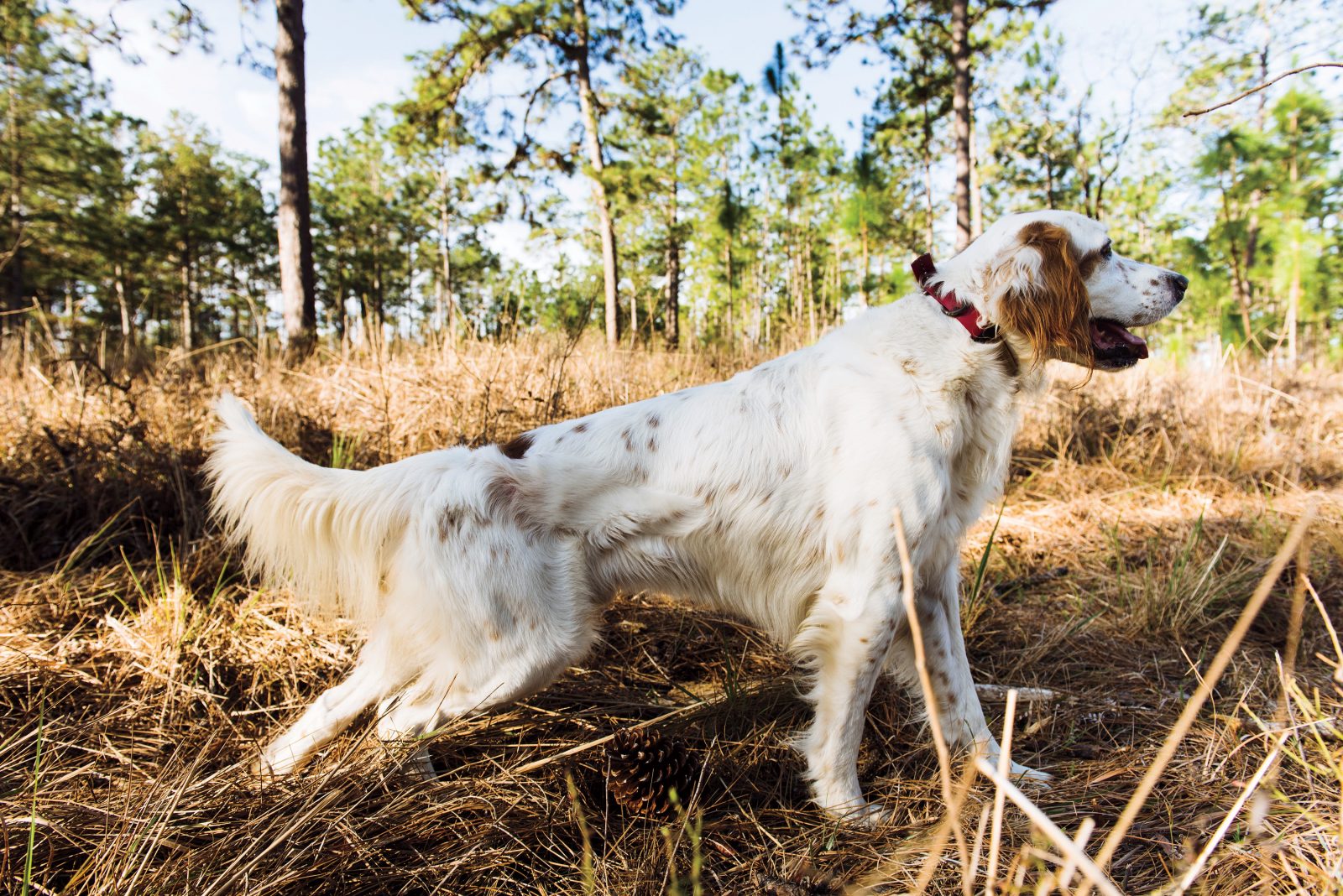
Photo: Andrew Kornylak
A setter gets a noseful of quail at Valhalla
“I remember sitting in my chair and hearing that phrase—plantation broker—and it was a jolt. I said: Wait a minute. That’s a job? And from that day to this, it’s all I ever wanted to do.”
After college Kohler clerked for a state senator and a law firm, picked up a law degree, and moved to a ranch outside Red Lodge, Montana, where his family had relocated. There, to generate additional cash flow while practicing law and selling real estate, Kohler and his then wife started a company making tile tables painted with trout and mountains and other Western icons. Within three years they had 250 dealers around the country and were filling a UPS truck five days a week. But his soul was still in the Red Hills. He knew by then that the high-wealth clientele in the plantation game often owned properties in the quail country of the South and the trout-rich Rockies of the West. He was covering his bases. He left Montana in 2000 for a four-year stint as an exclusive broker for Jacksonville, Florida–based Rock Creek Capital, managing hundreds of millions of dollars of land sales across the Southeast. In 2004 he struck out on his own, a Florida Cracker with membership in the Florida and Montana bars, real estate licenses in Florida, Georgia, Montana, and Wyoming, and a very firm idea of what it would take to keep his beloved Red Hills from falling into a sub-divided ruin.
“The last ten years was a scary time,” Bill Palmer says. “There was a lot of turnover in plantation ownership.” He sits in a rocking chair on a porch at the Tall Timbers Research Station, the organization’s privately funded, internationally renowned science institute that fosters land stewardship in the Red Hills. “It could have been a game changer depending on what kind of new ownership came in. Jon played a key role in keeping this area together.”
Palmer is CEO of Tall Timbers, which employs a thirty-person staff of scientists and land managers. The new generation of plantation owners, he says, is more interested in biodiversity, longleaf pine restoration, and how the Red Hills ecology functions on a large scale than many earlier owners were, but the foundational interest remains quail and quail hunting. “I don’t know what would happen here without that bird,” he says. “The Red Hills region is sustainable only as long as private landowners stay engaged and interested for the right reasons.”
Which explains why Kohler considers himself a “gatekeeper”—his word—to the region. As a broker, he can vet potential buyers of plantation properties, weeding out not only those who would develop the land, but also those who might not subscribe to the full—and expensive—program of prescribed fire and forest management required to maintain the Red Hills ecology. It’s a bit of an honor system. There are no governing bodies that oversee land conservation across the Red Hills. Social pressure within and between landowners moderates behavior. “This is a unique landscape that pivots on aesthetics and recreation and less on capitalistic endeavors,” Kohler says. “My job is to make sure that everything is in place so that proper stewardship of the land results in an increase in net worth or capital. If the numbers fall apart, it’s a lose-lose for everybody.”
The trick is that one number in particular often serves as the measuring stick for a plantation’s perceived success: how many quail it holds. There are certain givens to sustaining high populations of wild quail in the Red Hills: a robust prescribed burning plan, supplemental feeding, predator control, and an ironclad prohibition on pen-raised birds. One of the most visible variables, however, is forest management. The fewer trees, to a certain point, the greater the potential for quail. In pursuit of the highest number of quail possible, it’s tempting to cut so much timber that the aesthetic and monetary value of a property take a hit. “The land managers here manage these plantations like a canvas,” Kohler explains. “You can paint too much in or take too much out.
“When you’re at a cocktail party in New York, the measurement is how many birds you have,” he continues. “You don’t measure how pretty your place is, or the history on your property. A lot of consumptive quail hunters, the hot-rod hunters, they’re after the highest number possible. But you can’t hunt more than five or six coveys an hour effectively, so what’s the point of cutting all that timber for even more birds? That’s the tide we swim against.”
And according to many observers, maintaining this balance is where Kohler & Associates and Plantation Marketing Group shine. Kohler’s wife, Erica Kohler, oversees plantation valuations and managing contacts for the firm. Erica Hanway delves into historic document research, oral histories, and a property’s pedigree of quail and timber management to tease out narratives of Deep South history and sporting heritage. Two sales associates, Walter Hatchett and C. J. Brown, manage transactions. Most large properties get a royal treatment presented in wire-bound and hardback books. Kohler’s group “does amazing storytelling to bring to life the history and culture of these properties,” says Kevin McGorty. “It is a very rare skill set.”
Underscoring these “intrinsic values” of a property is a constant Kohler mantra: How much might a historic river ford add to a property’s value? What’s the worth of long-term quail management? Why does it make sense to pay top dollar for the privilege of owning a property that will cost hundreds of thousands of dollars in annual maintenance?

Photo: Andrew Kornylak
A road cuts through the longleaf pines at Greenwood
A perfect example is the recent sale of the momentous five-thousand-acre Greenwood Plantation. Just outside Thomasville, Greenwood is one of the Red Hills’ crown jewels. The plantation was the longtime home of John Hay “Jock” Whitney, former U.S. ambassador to the United Kingdom and publisher of the New York Herald Tribune, and his wife, Betsey Cushing Roosevelt Whitney. Whitney was a financier of Gone with the Wind, and the main Greenwood manor, considered among the finest examples of Greek Revival architecture in America, was the ultraprivate retreat to which Jacqueline Kennedy disappeared in the weeks after JFK’s assassination. The plantation contains the thousand-acre Big Woods, the largest privately owned tract of virgin longleaf pine in the world, plus a campus of almost fifty historic buildings that range from offices and greenhouses to a lodge and a massive winter stable.

Photo: Andrew Kornylak
The main house at Greenwood
It took four years to find the right buyers for Greenwood. The conservation philanthropist Emily “Paddy” Vanderbilt Wade paid $22 million for a four-thousand-acre swath that includes the Big Woods, and a Thomasville-based investment group bought the campus with the main house and historic structures.
“Jon marketed that property very sensitively,” McGorty says. “This wasn’t a highest-yield proposition. That wouldn’t have conserved the ecological and cultural values of Greenwood.”
On a late spring afternoon, Kohler looks over his herd of 130 grass-fed Angus cattle, feeding in a sun-dappled field that resembles a pine savanna more than a cattle pasture. “There are microbes in the saliva of cattle that get mixed in with the soil to stimulate root growth,” he says, with a level of excitement more typical of a man discussing tarpon fishing than cow spit. “All that feces, urine, the nutrients going into the soil—that’s what we lost when we took bison out of the landscape. But we can enact those processes if we’re proactive.”
This is Jon Kohler at play. By any measure he has forged a remarkably successful career selling Red Hills dirt. In his free time, he is loath to leave it. His seven-hundred-acre Red Hills farm, Lick Skillet, is a laboratory for all the management protocols he preaches to prospective buyers. Free-range, antibiotic-free cattle and hogs. Managed timber. Hay production. A duck pond. “I’ve made all the mistakes and learned from them,” he says. Kohler rarely accepts the frequent invitations to shoot ducks in Argentina or target sailfish in Costa Rica. He is in love with his land, knows its deep history, its archaeological sites, the place where de Soto crossed the Aucilla River. “Moving fences, checking on the river, that’s my fun.” Lick Skillet is his Blue Creek. His legacy to his two young sons, Greyson, who is four, and Ashton, who’s two. A couple of weeks earlier, he and Greyson were walking the edge of a Lick Skillet field and a covey of quail got up, the first bobwhites his son had ever seen.
“After the flush,” Kohler says, “Greyson told me, ‘Dad, that scared me!’ But he was smiling when he said it. And I told him: ‘Son, you never get over that.’”
On my last night in the Red Hills, I hang out with Kohler and his family at the “camp-house,” a simply designed getaway tucked into the woods of Lick Skillet. While steaks from his cattle sizzle on the grill, we sit on the porch railing and crack open Apalachicola oysters. The week before my visit, Kohler says, a man called him on the phone and started the conversation with an apology: His farm was only a hundred acres, and he realized Kohler typically dealt with much larger properties.
“But I could tell by talking to him how much he loved that land,” Kohler says. He detailed all the work he’d done, clearing brush and pruning trees, working past dark, worrying his wife. His concern was that all of his time and effort really weren’t making the property worth more. He worried that, from an economic perspective, he was wasting time and money.
“So much of my job is listening,” Kohler continues, watching the skylight fade behind the pines. “And feeling that man’s passion for his land, it just lights a fire under me, to make sure that if he ever does sell that property, that people appreciate what he’s done. That he gets paid for loving the land so much.”


